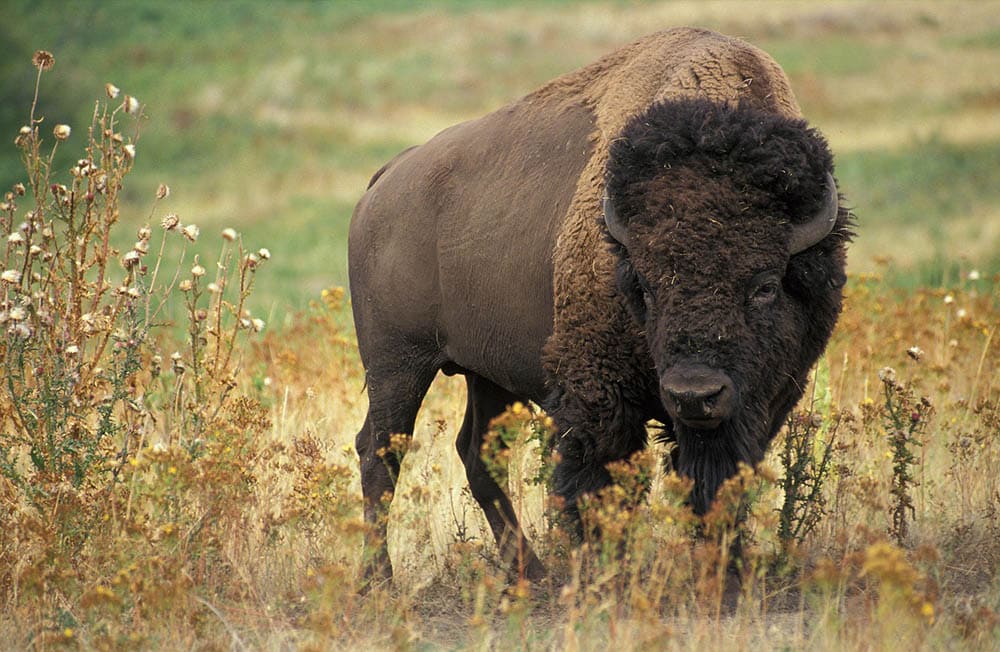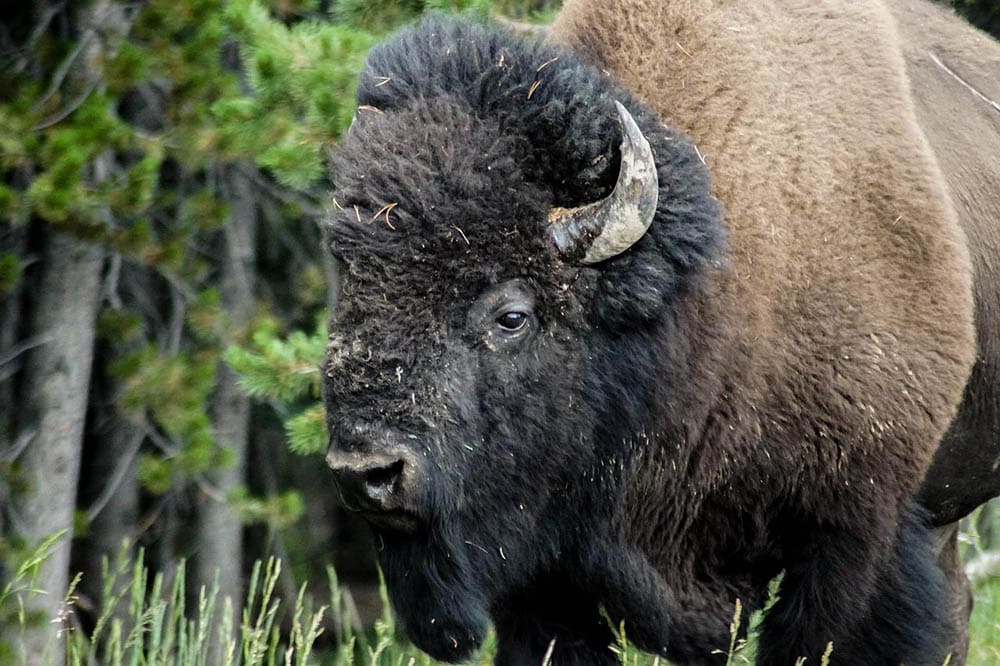Can You Hunt Bison in the US? Everything You Need to Know
Last Updated on

Free-range bison hunting is legal in some states, including Utah, Alaska, and Montana, where herds require culling for population control. But you’ll need a special permit, which is usually difficult to get a hold of. The number of permits that are granted each year is tightly controlled and limited. In fact, some people spend many years waiting for their permit. Since the permits are often drawn at random, some people never get the chance to experience hunting bison in the wild.
Luckily, there are other ways in which hunting bison is legal. Interested? Keep reading!

Hunting Bison on a Private Ranch
There are many bison ranches throughout the US that’ll grant you the opportunity to hunt this magnificent beast. The hunts are usually guided to help you take down a good quality bison that you can take home for meat, or as a trophy.
On bison ranches, the animals are left to roam in their natural habitat. But because they’re on private land, it’s easier to book a hunt than to wait for a free-range permit, which can be akin to winning a lottery.
Additionally, some ranches offer to skin and tan your bison too, and some will clean the head for you.
Although the experience may be a little different from hunting wild bison, for some people, it is the only chance they’ll get to fulfill their lifelong dream of hunting one of America’s most iconic animals.

Best Weapons for Bison Hunting
For many keen hunters, taking down a bison is a lifelong ambition. Bison are huge animals, not to mention tough. Centerfire rifles, handguns, muzzle-loading rifles, bow-and-arrows, and crossbows are all legal weapons for bison hunting, as long as they meet the following guidelines.
Different ranches may have their own criteria on bullet sizes, grains, and calibers, so it’s always best to check with the ranch owners when you’re planning and booking your hunting trip.
The Alaska Department of Fish and Game put out the following criteria for weapons that are considered legal for bison hunting:
Rifles and Handguns
Your rifle or handgun must fire a minimum of a 175-grain bullet, with 2,800 ft/lb of energy at the muzzle.
Muzzleloader
A .54 caliber or larger rifle should be used. A .45 caliber rifle could be used with a 300 grain, or larger slug. Anyone hunting with a muzzle-loading rifle must also carry with them a smokeless powder rifle that meets the rifle and handguns criteria listed above.
Black Powder Cartridge Rifles
These rifles must fire 400-grain bullets or larger, loaded with a minimum of 70 grains of black powder.
Bow
Longbows, recurve bows, and compound bows are legal to use, as long as they have a peak draw weight of 50 lbs or more. Your arrows will need to be 20 inches in length, and it is advised that bowhunters keep a rifle within easy reach.
Crossbow
Crossbows must have a peak draw weight of 100 lbs. The bolts must be at least 16 inches in length, and the bolt and blade together must weigh a total of at least 300 grains.

When Is the Best Time to Hunt Bison?
For wild bison hunting, the bison hunting season usually runs from October to November, though in Alaska, it’s from February to March.
Bison hunting on ranches is available all year round.

Final Thoughts
It is legal to hunt wild bison in several US states, but it’s difficult to get hold of the permits to do so. It may be easier, and quicker, to book a hunt at a bison ranch. Another benefit of hunting at a ranch is that it’s available all year round, so you can decide on when and where.
Featured Image Credit: WikiImages, Pixabay
About the Author Robert Sparks
Robert’s obsession with all things optical started early in life, when his optician father would bring home prototypes for Robert to play with. Nowadays, Robert is dedicated to helping others find the right optics for their needs. His hobbies include astronomy, astrophysics, and model building. Originally from Newark, NJ, he resides in Santa Fe, New Mexico, where the nighttime skies are filled with glittering stars.
Related Articles:
Can You Use Binoculars to Look At Stars? How to Choose the Right Pair
How to Clean a Refractor Telescope: Step-by-Step Guide
How to Clean a Telescope Eyepiece: Step-by-Step Guide
How to Clean a Rifle Scope: 8 Expert Tips
Monocular vs Telescope: Differences Explained (With Pictures)
What Is a Monocular Used For? 8 Common Functions
How to Clean a Telescope Mirror: 8 Expert Tips
Brightfield vs Phase Contrast Microscopy: The Differences Explained
